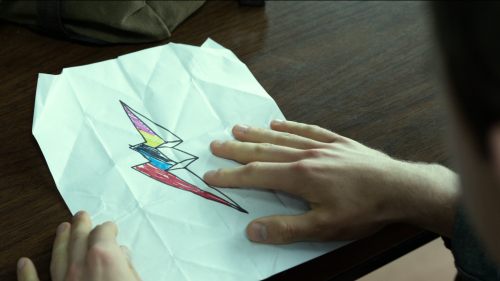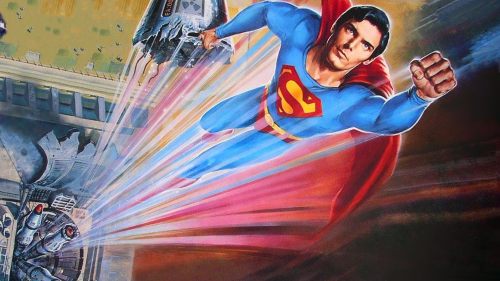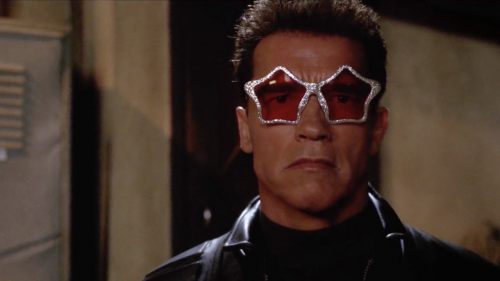Say Something Nice: SIN CITY: A DAME TO KILL FOR
2014’s Sin City: A Dame to Kill For, the belated sequel to 2005’s Sin City, is no mere bad movie. It is a flummoxingly bad movie. It reduces the intensely stylized visuals and ultra-macho melodrama of the first film to flat green screen, bad make-up and stale, self-pleased bloviating. It somehow manages to draw out a bad performance from the otherwise reliable Josh Brolin. More astonishingly, it draws a bad performance from Eva Green, the only one I’ve seen from her to date. It is admirable that directors Robert Rodriguez and Frank Miller wanted to write Jessica Alba a substantial, complicated role. Alas, said role is a draggy, dull cavalcade of misery and rage that plays against all Alba’s strengths as a performer.
A Dame to Kill For conveniently sums up its manifold artistic failures in Rodriguez and Miller’s shared cameo. They play a pair of bums who mumble incoherently at each other about justice in a grimy alley on TV. Jessica Alba’s Nancy watches and might be outright hallucinating them. But, real or imagined, their mumbling is one of the things that inspires Nancy to mutilate herself and go on a murderous rampage. It’s a self-indulgent, ugly, lazy, mean and ultimately outright baffling piece of filmmaking.All of those adjectives are good descriptors for A Dame to Kill For.
Sadly, they also apply to the recent work of Frank Miller. Miller was once one of the most vital and influential voices in American comics, known for thoroughly cool innovation. These days his work is more known for nonsense, xenophobia and general hatefulness. The surprisingly good Dark Knight III (a collaborative work with artists Andy Kubert and Klaus Janson and writer Brian Azzarello) suggests Miller might be turning a corner, but his best days are long behind him. A Dame to Kill For is prime proof.
But amidst the bric-a-brac of this fanged treasure chest filled with failure, there’s a bottle of lighting. The last scene of “The Long Bad Night”, one of the three short stories that makes up A Dame to Kill For, offers superb filmmaking. Watching it feels like reading the apocalyptic end of Ronin. Watching it feels like your breath catching as you turn the last pages of the best Sin City books. It’s thrilling, and it deserves laurels even if the rest of the movie qualifies for the rarified designation of “whatsit”.
Joseph Gordon-Levitt plays Johnny, an exceptionally skilled gambler. He’s come to Sin City to ply his trade and enjoy the good life. And he’s come for revenge on Powers Boothe’s Roak, his father. Roak would rather cradle a picture of Junior, his slain legitimate son, than acknowledge that Johnny and his mother exist. The fact that Junior was a murderous pedophile is not an issue for Roark. The night starts off excellently. Johnny soundly beats Roark at the poker table and takes a pretty waitress named Marcie (Julia Garner of Grandma) out for a night to remember. Then all his credit cards go bad at once.
That’s just the start of Johnny’s misfortunes. Roark’s goons break his hand, beat him senseless and kill Marcie (Miller’s misogyny hydra rears one of its heads). Roark himself repeatedly mocks and berates Johnny for the awful crime of existing. But, in his hubris, Roark leaves Johnny alive. A small gift from a kind waitress (Lady GaGa) gives the gambler one more shot at his father. He takes it, and cunningly bests Roark a second time. Enraged, Roark shoots him in the head.
But in death, Johnny’s victory only grows. As he himself puts it: “I beat you again every time somebody tells that story, and they’ll all say that they won’t tell it, but they will. That’s a story that’ll be told again and again until you’re dead, and long after you’re dead. I beat you forever.” Killing him only proves that Roark is a fragile bully.
What makes this scene sing? Its construction and its performances. Rodriguez and Miller confine the action to a single room and focuses on Gordon-Levitt and Boothe’s reactions to each other, saving the surreal and the grandiose for a single moment, when Johnny imagines himself being cut to ribbons by Roark’s cards. Besides looking cool on its own, it pays homage to one of the funniest and saddest sequences from the excellent Sin City: That Yellow Bastard. And those extremely cool black cards? They’re the scene’s key props. By focusing on their texture, the way light hits them and the way they move and sound, the directing duo endow them with the weight and power of the game’s stakes.


Gordon-Levitt and Boothe play off each other superbly. Johnny’s grave, resigned determination gradually opens up, revealing a little bit of the cool confidence he brought to the first game. There’s even a flash of happiness when he reveals that he can shuffle cards one-handed. Poker may be Johnny’s instrument of revenge, but it’s also something he genuinely enjoys. And Gordon-Levitt nails his last words, a subtle blend of anger, sorrow, triumph and acceptance that stands out in an otherwise over-the-top world. Boothe, contrasting his scene partner, moves from smarmy arrogance to shocked rage. Roark never full-on explodes, but he grows more and more venomous, more and more rattled as he realizes what Johnny is doing and ultimately does. He tries to brush this off with a misogynist quip and the reduction of Johnny’s corpse to trash, but Boothe’s eyes, and the too-quick way he sits down and lights up a cigar, give away everything.
A Dame to Kill For spends most of its time flailing, including a sizable chunk of "The Long Bad Night" itself. Three years later and it has largely been forgotten. This scene though? It’s an accomplishment, a victory. It’s the sort of victory that lives forever.



